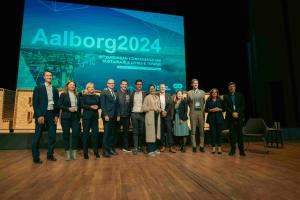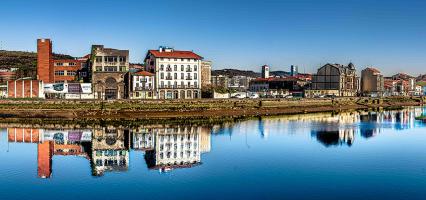Thessaloniki gets ready for its metro launch in November
The underground rapid transit lines have been under construction for almost two decades due to various project delays
 TheMayor.EU logo
TheMayor.EU logo City authorities have now identified three areas of action in sustainable building policy: renewable energy, structural renovations and digitalisation
Today, the Technology Foundation Berlin (Technologiestiftung Berlin) published a study on the potential carbon emissions savings that the city can make by retrofitting technology with digital instead of mechanical instruments. Although there is no precise data on the energy consumption of homes in apartment buildings, researchers are quite confident that smarter solutions could lead to fewer emissions.
The study was aimed at determining the savings potential in Berlin's housing stock and was funded by the Senate Department for Economics, Energy and Public Enterprises. The Technology Foundation Berlin, on the other hand, is a non-profit organisation, dedicated to developing smart solutions to aid in the city’s digital transformation.
An example of building technology is a radiator’s control valve. Researchers argue that installing a digital valve, for instance, can make heating much more efficient. The example they give is this: a digital valve can turn on the heat when a person enters the room or turn it off when the temperature reaches a certain level.
Consequently, based on the study’s findings, local authorities have identified three areas for potential emissions reduction. They include renewable energy, structural renovations, like insulation, and digitalising technology within the building.
According to the Technology Foundation’s findings, Berlin’s apartments emit 2.6 million tons of CO2. Nicolas Zimmer, Chairman of the Technology Foundation Berlin explained that they account for a cool third of the city’s total emissions. Digitalising building technology could reduce that amount by as much as 30%.
At the same time, one of the issues researchers ran into, was determining where exactly that energy was being consumed in each individual home. This is because many buildings are measured as a single consumer and emitter. Installing digital controls in individual homes can solve that problem and can help identify more specific energy waste issues.
The study identifies publicly owned housing associations in Berlin, with a considerable stock of 300,000 units, as a good place to start retrofit digitalisation. Most of the units are in buildings from the 1960s and 1980s and though the city has already done a lot to reduce energy consumption there, digital building technology could prove to be the next important step towards sustainability.
Stephan Schwarz, Berlin Senator for Economics, Energy and Public Enterprises explained that the majority of apartments in Berlin are in buildings built before digitalisation and need to be retrofitted.
He continued: “We want this modernization because it will make a decisive contribution to the energy transition, and we offer various subsidies for this. Because in addition to new energy sources and energy-efficient building refurbishment, the digitization of building technology is the third area that can make substantial contributions to the energy transition.”

The underground rapid transit lines have been under construction for almost two decades due to various project delays

Now you can get your wine in Talence by paying directly in Bitcoin

That’s because the state has to spend money on updating the railway infrastructure rather than subsidizing the cost of the popular pass

Rethinking renewable energy sources for the urban landscape

The examples, compiled by Beyond Fossil Fuels, can inform and inspire communities and entrepreneurs that still feel trepidation at the prospect of energy transition

Now you can get your wine in Talence by paying directly in Bitcoin

The 10th European Conference on Sustainable Cities and Towns (ESCT) sets the stage for stronger cooperation between the EU, national and local level to fast track Europe's transition to climate neutrality.

At least, that’s the promise made by the mayor of Paris, Anne Hidalgo

The underground rapid transit lines have been under construction for almost two decades due to various project delays

At least, that’s the promise made by the mayor of Paris, Anne Hidalgo

Hostal de Pinós is located in the geographical centre of the autonomous region

Despite its church-y name, the district has long been known as the hangout spot for the artsy crowds

Urban dwellers across the EU are having a say in making their surroundings friendlier to people and the environment.

Forests in the EU can help green the European construction industry and bolster a continent-wide push for architectural improvements.

Apply by 10 November and do your part for the transformation of European public spaces

An interview with the Mayor of a Polish city that seeks to reinvent itself

An interview with the newly elected ICLEI President and Mayor of Malmö

A conversation with the Mayor of Lisbon about the spirit and dimensions of innovation present in the Portuguese capital














